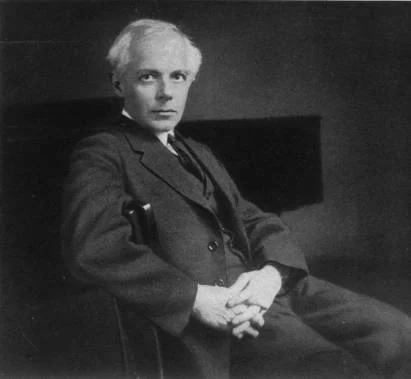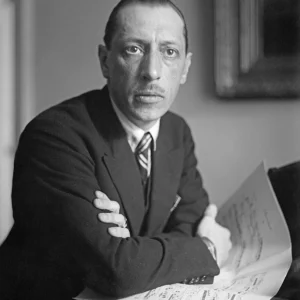Béla Viktor János Bartók, born on March 25, 1881, in Nagyszentmiklós, then part of the Austro-Hungarian Empire (now Sânnicolau Mare, Romania), was a pioneering composer, pianist, and ethnomusicologist. His innovative approach to integrating folk music elements with modernist techniques revolutionized the landscape of classical music in the 20th century. Bartók’s legacy as a trailblazer in the realms of folk music and modernism continues to influence musicians and composers worldwide.
Early Life and Education
Béla Bartók was born into a musical family. His mother, Paula Voit Bartók, was a piano teacher, and his father, Béla Bartók Sr., was the director of an agricultural school and an amateur musician. Bartók’s early exposure to music had a profound impact on his development. He showed exceptional musical talent from a young age, beginning piano lessons with his mother at the age of five.
After his father’s death in 1888, Bartók and his family moved to Nagyszőlős (now Vynohradiv, Ukraine), and later to Pozsony (now Bratislava, Slovakia). In 1899, Bartók enrolled at the Royal Academy of Music in Budapest, where he studied piano with István Thomán and composition with János Koessler. His time at the academy solidified his technical skills and introduced him to the works of contemporary composers like Richard Strauss and Claude Debussy.
Early Career and Folk Music Exploration
Bartók’s early compositions were heavily influenced by the Romantic tradition, but his musical direction took a transformative turn when he discovered Hungarian folk music. In 1904, he heard a young peasant girl singing traditional folk songs while vacationing in Transylvania. This encounter sparked a lifelong passion for ethnomusicology and the study of folk music.
Bartók began to systematically collect and transcribe folk songs from various regions, traveling extensively throughout Hungary, Romania, Slovakia, and North Africa. He collaborated with fellow composer Zoltán Kodály, and together they amassed a vast archive of folk music recordings. Bartók’s ethnographic work was groundbreaking, as he used phonograph recordings to capture the authentic sound of folk melodies and rhythms.
Integration of Folk Music and Modernism
Bartók’s deep immersion in folk music profoundly influenced his compositional style. He sought to integrate the raw, unadorned qualities of folk music with modernist techniques, creating a unique musical language. His use of modal scales, asymmetrical rhythms, and dissonant harmonies reflected the essence of the folk music he had collected.
Early Modernist Works
Bartók’s early modernist works, such as “String Quartet No. 1” (1908) and “Fourteen Bagatelles” (1908), showcased his innovative approach to composition. These pieces incorporated folk-inspired melodies and rhythmic patterns while exploring new harmonic and structural possibilities. Bartók’s “Allegro barbaro” (1911), a piano piece characterized by its raw energy and percussive quality, further exemplified his integration of folk elements with modernist sensibilities.
Major Compositions
The Miraculous Mandarin
One of Bartók’s most significant works from his early period is the pantomime-ballet “The Miraculous Mandarin” (1918-1924). The piece tells the story of a mandarin who is lured by three thugs and a seductive girl. The music is highly dissonant and rhythmically complex, reflecting the violent and surreal nature of the story. The ballet’s premiere in Cologne in 1926 caused a scandal due to its provocative content, but it remains a landmark in Bartók’s oeuvre.
Concerto for Orchestra
During World War II, Bartók emigrated to the United States, where he composed some of his most celebrated works. The “Concerto for Orchestra” (1943) is one of his most well-known compositions. Commissioned by the Boston Symphony Orchestra, the piece showcases Bartók’s mastery of orchestration and his ability to blend folk elements with contemporary techniques. Each movement highlights different sections of the orchestra, creating a dynamic and colorful musical landscape.
Music for Strings, Percussion, and Celesta
“Music for Strings, Percussion, and Celesta” (1936) is another masterful example of Bartók’s innovative approach. The piece is structured in four movements, each exploring different textures and sonorities. The use of counterpoint, asymmetrical rhythms, and unusual instrumental combinations creates a sense of mystery and tension. The work’s distinctive sound has made it a favorite among conductors and orchestras.
Personal Struggles and Triumphs
Bartók’s life was marked by both professional success and personal challenges. He faced significant political and social upheaval during his lifetime, including World War I, the rise of fascism, and World War II. Bartók was a staunch opponent of fascism and nationalism, and his political views often put him at odds with the authorities.
In 1940, Bartók emigrated to the United States to escape the worsening political situation in Europe. Although he faced financial difficulties and health issues, he continued to compose and perform. Bartók’s diagnosis of leukemia in 1944 was a significant blow, but he persevered, completing some of his most important works during his final years.
Impact on Music and Ethnomusicology
Béla Bartók’s contributions to music and ethnomusicology are immeasurable. His pioneering work in collecting and preserving folk music has provided invaluable insights into the musical traditions of various cultures. Bartók’s ethnographic research methods set new standards for fieldwork and documentation, influencing future generations of ethnomusicologists.
Bartók’s innovative compositional techniques have had a lasting impact on the development of 20th-century music. His integration of folk elements with modernist principles has inspired countless composers, including György Ligeti, Witold Lutosławski, and Benjamin Britten. Bartók’s ability to create a unique musical language that transcended cultural and temporal boundaries has solidified his place as one of the most influential composers of the modern era.
Legacy and Influence
Béla Bartók’s legacy continues to be celebrated through performances, recordings, and scholarly research. His works are regularly performed by orchestras, chamber ensembles, and soloists around the world. The Bartók Archives in Budapest, established to preserve his manuscripts, recordings, and personal documents, serves as a testament to his enduring influence.
Bartók’s innovative approach to composition and his commitment to preserving folk music traditions have left an indelible mark on the world of music. His ability to bridge the gap between the past and the present, combining the richness of folk traditions with the innovations of modernism, has ensured that his contributions to music will be remembered for generations to come.
Conclusion
Béla Bartók’s life and work embody the spirit of innovation and exploration. His dedication to preserving and integrating folk music with modernist techniques has left a lasting impact on the world of classical music. From his early beginnings in Nagyszentmiklós to his status as a pioneering composer and ethnomusicologist, Bartók’s journey is a testament to the power of creativity and the exploration of cultural heritage.
Through his compositions, ethnographic research, and personal writings, Bartók invites listeners to explore the depths of musical expression, offering both a reflection of and a critique on the modern world. His contributions to music and ethnomusicology continue to be celebrated, ensuring that the legacy of this innovator of folk music and modernism will endure for generations to come. Bartók’s exploration of the fusion of traditional and contemporary elements remains relevant, inspiring and challenging musicians and composers to push the boundaries of their own creativity.



